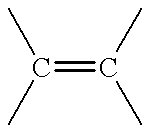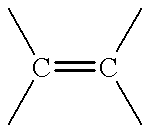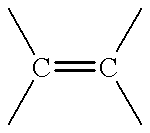Intercalates and exfoliates formed with long chain (C6+) or aromatic matrix polymer-compatible monomeric, oligomeric or polymeric intercalant compounds, and composite materials containing same
a technology of aromatic matrix and intercalant compound, which is applied in the direction of silicon compounds, other chemical processes, separation processes, etc., can solve the problems of intercalated material not being exfoliated, intercalated polyvinylpyrrolidone, and little success
- Summary
- Abstract
- Description
- Claims
- Application Information
AI Technical Summary
Benefits of technology
Problems solved by technology
Method used
Image
Examples
example 2
Synthesis of N-(12-aminododecyl)-2-pyrrolidone (ADDP): ##STR17##
1,12-diaminedodecane (100 g, 0.50 mole) was reacted with .gamma.-butyrolactone (13.86 ml, 0.18 mole) at 210.degree. C. under similar procedure of AHP preparation. Upon cooling to room temperature, the reaction mixture was solidified as white solid. Mass Spectra: m / e (relative intensity) 269(M+1.sup.+, 18.50).
example 3
Synthesis of N-oleyl-2-pyrrolidone (OP): ##STR18##
Oleylamine (125 g, tech grade, 80% pure, 0.374 mole) was heated with .gamma.-butyrolactone (27 ml, 0.35 mole) at 180.degree. C. under nitrogen for 24 hours. The product was purified via vacuum distillation as a light yellow waxy solid. Mass Spectra: m / e (relative intensity) 335 (M.sup.+, 28.40).
example 4
Synthesis of 4-(2-oxo-pyrrolidin-1-yl)-benzoic acid: ##STR19##
Sodium 4-aminobenzoate (42.5 g, 0.267 mol) was suspended in 250 ml benzene. To this solution, upon vigorous stirring, 4-chlorobutyryl chloride (29 ml, 0.248 mol) was added slowly. The temperature of the reaction mixture was heated to 60.degree. C. It is at 60.degree. C. that the reaction was continued for another 20 hours. Na.sub.2 CO.sub.3 solution (20%, 600 ml) was then added and the benzene layer was separated. The aqueous layer was acidified and the white precipitate was filtrated and recrystallized from methanol to form colorless crystal of 4- (2-oxo-pyrrolidin-1-yl)-benzoic acid. Mass Spectra: m / e (relative intensity) 205(M.sup.+, 44.23).
PUM
| Property | Measurement | Unit |
|---|---|---|
| distance | aaaaa | aaaaa |
| thickness | aaaaa | aaaaa |
| thickness | aaaaa | aaaaa |
Abstract
Description
Claims
Application Information
 Login to View More
Login to View More - R&D
- Intellectual Property
- Life Sciences
- Materials
- Tech Scout
- Unparalleled Data Quality
- Higher Quality Content
- 60% Fewer Hallucinations
Browse by: Latest US Patents, China's latest patents, Technical Efficacy Thesaurus, Application Domain, Technology Topic, Popular Technical Reports.
© 2025 PatSnap. All rights reserved.Legal|Privacy policy|Modern Slavery Act Transparency Statement|Sitemap|About US| Contact US: help@patsnap.com



